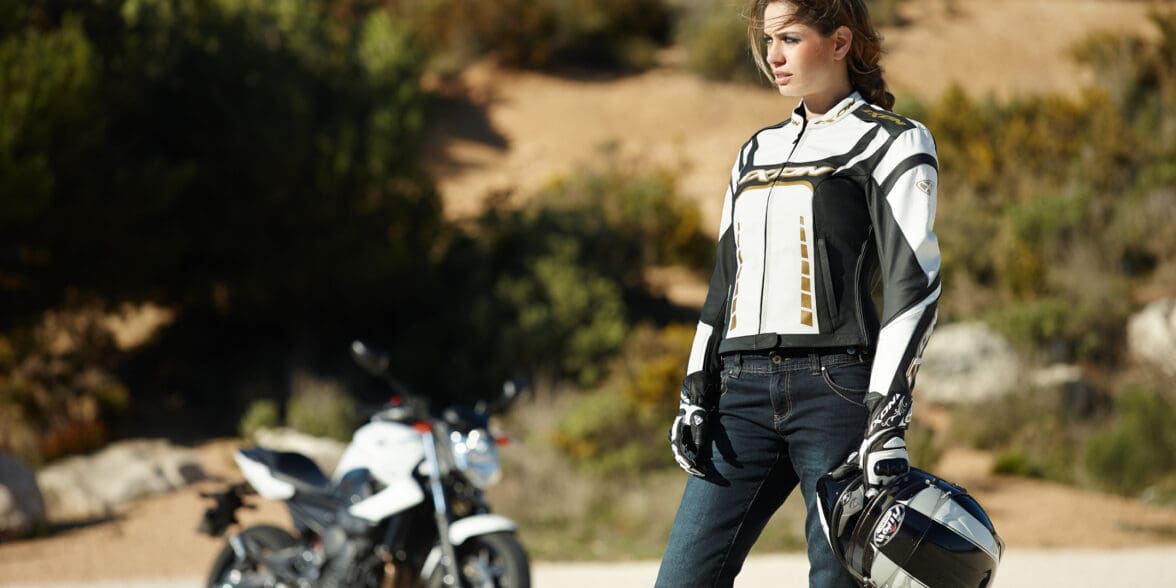In Part 1, we looked at the pioneers of women’s motorcycle riding apparel and how it has blossomed only in recent years. In Part 2 we look at more of the newcomers who are helping get more women into fashionable protective riding gear and on to bikes.
DriRider designer Andrew Wright is a man who is struggling to come to terms with the challenges of designing protective gear for women riders. Check out a DriRider brochure and although the women’s section is small, it’s getting bigger and represents more than 10% of the catalogue. One thing he’s learnt is that women’s feet and legs are different.
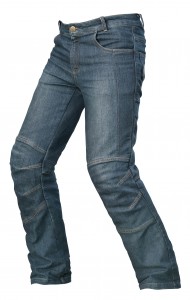
“They’re more narrow than men’s feet and they generally have larger calves than men so you have to be mindful of the fit,” he says. “It’s fairly easy for us because our market is designed for Australian-sized ladies, based on a size 12 and then scale up and down from there.” You can almost hear the anguish in Andrew’s voice as he talks of the difficulties of designing women’s gear. “You’ve got to get everything just right from the colours to the texture of the material,” he says.
But like Harley-Davidson‘s Karen Davidson, he says modern materials are helping their cause. “We use a lot of nylons these days which are quite soft to touch which the ladies like. It’s got to be very comfortable. It also has to be flattering. We can’t make ladies’ hips look wider.”
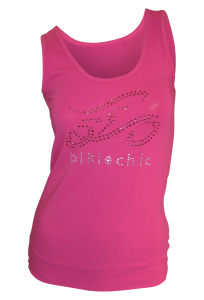
He says designing gear for women is a balancing act between fashion, fit and protection. “It’s a hard balance to get the fashion right which is more important than men’s. Fit is second and then make it protective.” Diane Scaysbrook of BikieChic Clothing agrees: “Women don’t want it just for protection, they want it to look great so they want nice soft leather. It’s a whole different ball game.”
But Andrew says women are more cautious than men and demand good protection. He cites a letter of thanks from customer Shiralee Allen who says her Dririder gear “saved my life” when she slid off into the bush in the Victorian Alps. “After skidding along the bitumen for about 3 metres, then 2 metres down a shrubby, muddy embankment, I was able to “walk” away, with some minor internal injuries, bruising, and small fracture in a rib,” she says. “The gear is trashed, but without it, I would definitely not be here today. Best investment I have ever made.”
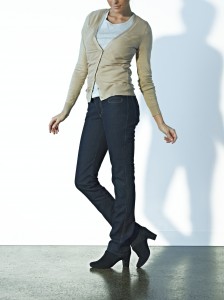
One brand that has always put protection first is Australian company Draggin Jeans. Sales manager Will Cope says women’s priorities are doubled: fashion and safety. “They don’t want to compromise one to get the other,” he says. “It’s one of those tricky things where the balance has to be there. It is a real challenge and something that we really focus very hard on.”
The rewards have come, too, with their Moto Jacket winning an Australian design award; An example of balancing fashion and safety came when women wanted low-rise jeans. “We didn’t want to compromise safety with the lower back and hips exposed, so we released the Minx jean which just went crazy,” he says. “It was designed to look like a hipster. It was only low at the front but came up on the side and back, so it looked low rise but had all the safety of our other jeans.”
He says fashion is now trending toward a high-rise jean and they have recently released the Twista women’s jeans with Next Gen protective Kevlar/Dyneema lining. Early this year they will add the Holeshot jeans in women’s styling which will be the first jeans with fully CE-approved Level 2 race standard which is the new top standard in Europe. “Luckily for us we have Fiona (Mackintosh) as our general manager and she rides and she designs the female jeans so it puts us in a unique position with someone who is using and designing the product who is female,” Will says.
He says their women customers don’t buy just one pair. “They buy a couple of pairs because they are a lot more fashion conscious than us guys,” he says. “When women ride they want to have the option of a couple of different styles like they do with their normal wardrobe. That’s why it’s important to have so many styles.” Draggin’ Jeans has eight styles of jeans, three camo pants and three jacket models all for women.
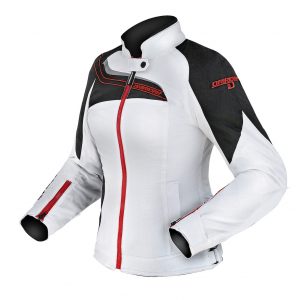
Ixon is another brand adding more and more women’s gear to their catalogues. Dave Maddock of importer Ficeda Accessories says they have heaps of women’s gear and it’s not necessarily pink. That strikes a chord with Diane who says adding pink or a “girlie” colour isn’t the answer to styling for women riders. “Ultimately women still love black on a bike which is more of a slimming thing than a practical thing for the road grime,” she says. However, in recent years they have added more colours such as purple and red.
Ixon hit the Australian market in 2005 with colours, styling and features for men’s jackets not seen before. “We also featured quite a large dedicated women’s range of products, that were able to be feminine with being pink,” Dave says. Now they have increased their range with more CE-certified textile jackets, catering for all riders, all year round. Ficeda boss Matt Dowd says CE certification means riders will have confidence in the product. “With data coming to light showing that, on average, approximately 5000 motorcyclists are injured each year (taken over a four-year period), it shows that we have a responsibility to offer products of the highest standards available in order for Australian motorcyclists to be able to best protect themselves, and continue doing what we all love, riding bikes,” he says.
So, if you look around, women’s gear is out there in fashionable styles and colours with modern protection. Just make sure the dealership has a mirror.


